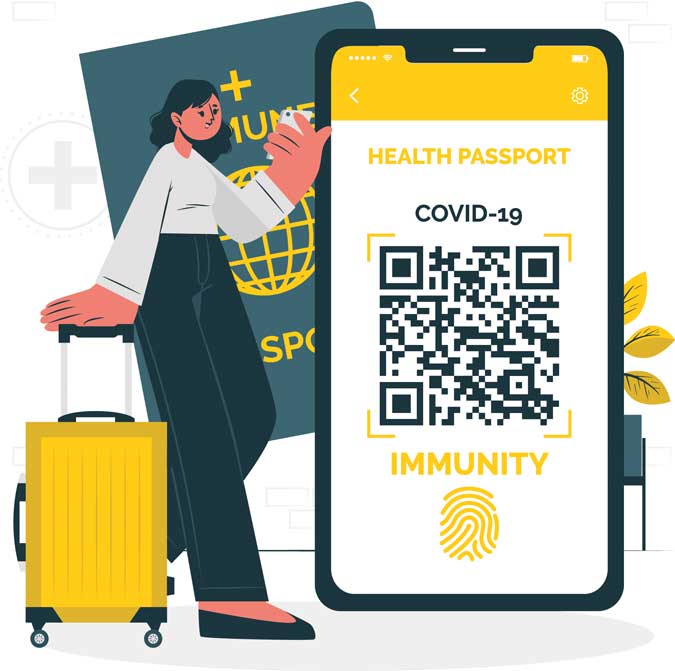
Numbers Don’t Lie
By Andrew J. Masigan

Many of us may not realize the importance of the travel and tourism industry to the economy. In 2019, before the pandemic wreaked havoc on the industry, travel and tourism accounted for 12.7% of gross domestic product or roughly $47.8 billion worth of goods and services. That year, the Philippines welcomed 8.26 million foreign tourists who pumped $11 billion into the economy. Domestic tourism generated the balance of $36.6 billion. In terms of employment, the industry directly employed 1.3 million of our countrymen. Taking all these into consideration, it is hard to fathom how a full economic recovery can be realized without the resumption of travel.
COVID-19’s disruption to travel and tourism is far more severe and longer lasting than the 9/11 attacks of 2001, SARS of 2003, and the global financial crisis of 2008, combined. For context, SARS had a six months effect that caused industry net losses of $7 billion. COVID has so far paralyzed the industry for 15 months and running, and accumulated losses of $47.7 billion as of end March.
Airlines based in the Asia Pacific region declared a combined net loss of $10.5 billion in 2020. Our very own Philippine Airlines booked a loss of $617.65 million for the first nine months of that year while Cebu Pacific booked a loss of $457 million for the entire year. The number of international flights from Manila plummeted from 10,769 in 2019 to 2,975 in 2020 while domestic flights plunged from 13,392 to 3,739. That’s a 75% decline!
Losses are also mounting for those connected to the travel and tourism industry including hotels and resorts, tour operators, restaurants, spas, and entertainment venues. Aid provided by the government was practically insignificant, coming in the form of longer credit terms for permits, a few tax breaks, and financial aid for small and medium scale enterprises. Airlines and large hotel chains have not received the financial lifeline they need. More than 11% of tourism enterprises have declared insolvency, with more to come unless tourism and travel open up.
The International Air Transport Association (IATA) is the trade association of the world’s airlines. Their mission is to save airlines and all related tourism enterprises from sinking further. In collaboration with the World Health Organization (WHO) and the International Civil Aviation Organization (ICAO), IATA is aiming to lift all travel restrictions across nations by Dec. 31, 2021. This means, no more pre-departure testing, no quarantine requirements for arriving passengers and no more travel or flight bans.
This will be made possible through the use of the IATA Travel Pass. Think of the travel pass as a digital passport that comes in the form of an app installed to one’s phone. The app will contain one’s COVID test results and vaccination details as well as all related health certificates. It will declare if one is “ok to travel” or not. Airlines and immigration control will use this as a basis of accepting passengers.
The app will provide passengers with information on the testing and vaccination requirements of all IATA member airlines and country destinations. It will also enumerate the nearest accredited testing centers, wherever you are. Laboratories will automatically transmit test results and vaccination details to the IATA server. Hence, no one can tamper with their test results.
The challenge to IATA, the WHO, and ICAO is unifying travel protocols across nations. Today, 69 types of testing protocols are used around the world; 92 countries require pre-departure tests while 103 do not; 41 countries require testing upon arrival. Thus, a new, unified, health protocol must be established that is acceptable to all countries. Vaccination will not be a prerequisite for international travel.
Waiting for countries to achieve herd immunity before borders are opened is not an option, asserts IATA. Herd immunity can take anywhere from two months to three years and the travel and tourism industry (and most economies) cannot wait that long. According to the Economist Intelligence Unit, the Philippines is expected to achieve herd immunity by the 4th quarter of 2023, the last among ASEAN-6 to do so. IATA recommends that borders should open as soon as people belonging to high risk categories are vaccinated.
Most major international airlines, including Philippine Airlines and Cebu Pacific are adopting the IATA travel pass system. The Philippine Bureau of Immigration and Deportation is still reviewing IATA’s proposal.
Although IATA is targeting to roll out its travel pass by Dec. 31, it is safe to assume that the travel pass will be adopted by most countries by the 3rd or fourth quarter of 2022. Hence, normalization of travel will likely happen in 2023. Businesses that depend on travel and tourism, including airlines, hotels and restaurants, must hold on and/or find other ways of survival until then.
COVID-induced travel bans have caused massive layoffs and business closures, and consequently, untold suffering among tourism stakeholders around the world. In the Philippines, 33% of all travel and tourism employees have been laid off. The IATA travel pass gives us hope that domestic and international travel will open sooner, rather than later. With this, we can begin rebuilding our lives and our economies again.
Andrew J. Masigan is an economist
andrew_rs6@yahoo.com
Twitter @aj_masigan